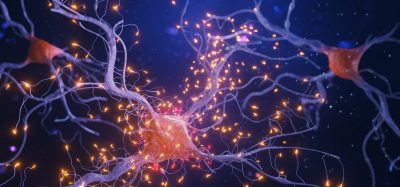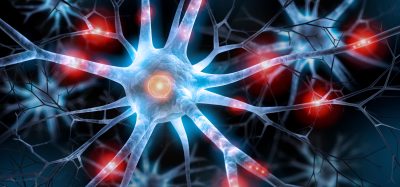Screening platform reveals compounds that protect neuronal mitochondria
Posted: 13 January 2020 | Victoria Rees (Drug Target Review) | No comments yet
Researchers have developed a screening system and identified a set of compounds that protect neuronal mitochondria in mice.


A novel screening platform has been developed by researchers which has allowed them to discover a new set of drug-like compounds that demonstrate neuronal mitochondria protection in mice. According to the team, their findings include an ingredient found in sore throat lozenges, that may powerfully protect brain cells from dangerous stresses found in Alzheimer’s and other neurodegenerative diseases.
The platform, established at Scripps Research, US, enabled the researchers for the first time to rapidly test libraries of thousands of molecules to identify those that provide broad protection to mitochondria in neurons.
The researchers say that mitochondrial damage is increasingly recognised as a major factor and in some cases a cause for neuronal degeneration diseases such as Alzheimer’s, Parkinson’s and amyotrophic lateral sclerosis (ALS).
Automation now plays a central role in discovery. From self-driving laboratories to real-time bioprocessing
This report explores how data-driven systems improve reproducibility, speed decisions and make scale achievable across research and development.
Inside the report:
- Advance discovery through miniaturised, high-throughput and animal-free systems
- Integrate AI, robotics and analytics to speed decision-making
- Streamline cell therapy and bioprocess QC for scale and compliance
- And more!
This report unlocks perspectives that show how automation is changing the scale and quality of discovery. The result is faster insight, stronger data and better science – access your free copy today
…mitochondrial failure is a feature of many neurodegenerative disorders and something that must be corrected if neurons are to survive”
The system uses cultured neurons from mouse brains in which mitochondria are labelled with fluorescent tags. Sophisticated microscope imaging and semi-automated image analysis allowed the researchers to quickly record mitochondrial numbers, shapes and other visible markers of health in the neurons before and after exposure to different compounds.
In an initial demonstration of their platform, the scientists screened 2,400 compounds. From this, they found 149 with significant positive effects on neuronal mitochondria in mice. They reduced this number to just over a dozen that increase the health of neuronal mitochondria and provide broad protection from stresses found in neurodegenerative disorders.
The researchers are now testing the most potent of these mitochondria-protectors in animal models of Alzheimer’s, ALS and other diseases, with the goal of developing one or more into new drugs.
“It hasn’t yet been emphasised in the search for effective therapeutics, but mitochondrial failure is a feature of many neurodegenerative disorders and something that must be corrected if neurons are to survive,” says principal investigator Dr Ronald Davis, professor in the Department of Neuroscience at Scripps Research. “I’m a big believer that finding mitochondria-protecting molecules is the way to go against these diseases.”
The findings appear in Science Advances.
Related topics
Hit-to-Lead, Imaging, Neurons, Neuroprotective compounds, Screening, Target Molecule
Related conditions
Alzheimer's, Amyotrophic Lateral Sclerosis (ALS), Parkinson's
Related organisations
Scripps Research
Related people
Dr Ronald Davis








